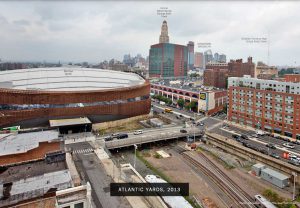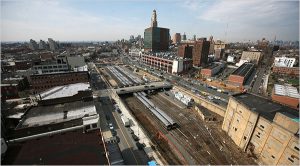New York is known for being the city that never sleeps. There are multiple tall building where these buildings are beautiful, and even have bright lights surrounding them.It’s hard to bare the fact that you are actually in New York. Most people see New York for it being similar to Time Square but it’s not. In New York there’s diversity. What usually happens is that people with higher power have the power to build building to an extend where overlapping and gentrification occurs. Certain areas are made to look nicer or even to show the wealth that has been put. In all cases it starts with the little businesses and once it has outgrow, that place will be turned into an expensive property in which the prices will increase. With the property that was bought many properties will be brought around the area.Juxtaposition can be a positive or a negative impact based on the location. In most cases overlapping can be a negative side just for the fact that it can lead to gentrification and having other building being built for other people’s needs.
The walk near by the school wasn’t very far. Brooklyn is one of the five boroughs that wealthy people are actually moving in. So what is happening is that there’s overlapping in the neighborhoods that are in poverty. Where these wealthy people are making it look better then it was before. If somebody doesn’t really know what overlapping is, it’s when there’s and extend over so as to cover partly. The hotel of Hampton Inn is a good example of overlapping. That area was a project that was in mind for a while and the people who decided to built it took a while to actually built the hotel. If people where to see the area and the walk you will see that there are still old buildings that are still surrounding the neighborhood. The hotel was finally built in 2014.It was a long process for this hotel. The fact that there were hotels and other important building before the Hampton Inn shows that the process to getting the hotel took a while.
The juxtaposition of the hotel is that the architecture it different compared to the building connected to it on the left side .Based on the architecture the material of the hotel is actual pricey compared to the building that is connected to it which is built from brick. As well it’s an overlap, the fact that it’s actually pushing the brick building that it’s connected to away which makes it an overlap. Probably later on that building that it is connected to it will be apart of the hotel. Reason why is because the building doesn’t look like it’s taken care of. So since the hotel isn’t as big as most hotels the people who own the hotel may think to buy the building that is connecting to the hotel just to create more space and get more people in the hotel. In which the building connecting the hotel was actually removed and build to be apart of the hotel. So from the start the owners of the hotel planned, to take that space all along no matter what. Which can lead to gentrification because if the building next to it was a building of a company of where families stood then the other part of that building was cut off and built into a hotel. So the hotel owner decided that it will be best to fit that hotel and make whomever was staying there move out. Either way the building next to it wasn’t doing great business anyways.
Hotels such as the Hampton Inn in Downtown Brooklyn are usually overlapping others. Based on an article “How Gentrification Powers New York City’s Tourism Industry” a good point that stands out to the fact hotels being a project where a lot of expenses are put in which states” Since then, the hotel has seen its clientele switch over from international visitors to domestic as currency values have made it more expensive to visit New York”. What this gives is that with Manhattan being the craziest borough it’s also where a lot of action occurs. As well of New York being the city that never sleeps, owners want to be able to build hotels so that outsiders can enjoy the experience and also spend money. With that can connect back to how in all areas there has been overlapping. Which can conclude to Manhattan looking the way it looks because of overlapping. Another piece of information from the same article is that “I think there’s people who think of New York City as a separate entity from the U.S., because it’s very different here than the rest of the country,” which is a true fact for many reasons. A reason as to why it’s a big deal is that people are being pushed out of there homes for theses hotels to be built. With the hotel next to City Tech the building that was connected to it was something before the hotel was built. Now that the hotel is built what ever was there before doesn’t matter so in most cases everything in New York has been overlapped either for the good or bad.
In conclusion overlapping in New York can be a positive or a negative cause. With the hotel nearby the school the overlap on the hotel was half and half on being positive and half on being negative. With juxtaposition it isn’t all there do to the cause and effect it can create in neighborhoods. Many of neighborhoods have been sacrificed to make a better neighborhood where in all situations it’s for other people. Furthermore juxtaposition can also have a good cause into making neighborhoods better for people who live there and want a better environment.
Work Cited
Hylton, Ondel. “First Look at 22-Story Expansion of Downtown Brooklyn’s Hampton Inn Hotel.”6sqft, 6 Aug. 2015, www.6sqft.com/first-look-at-22-story-expansion-of-downtown-brooklyns-hampton-inn-hotel/.
Shievachman, Andrew. “How Gentrification Powers New York City’s Tourism Industry.” Travel News, Airline Industry News, & Hotel Industry News by Skift, skift.com/new-york-city-tourism-and-gentrification/.





